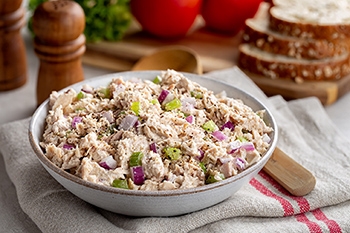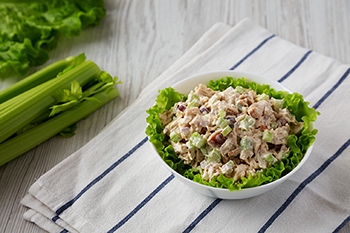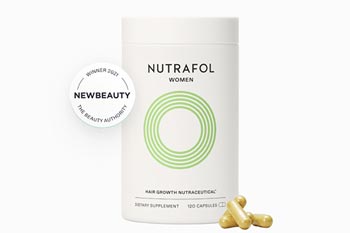Healthy Tuna Salad
Healthy Tuna Salad
Healthy Egg salad
Healthy Egg salad
The Ultimate Healthy Chicken Salad
The Ultimate Healthy Chicken Salad
Traditional Keto chaffle
When the waffle make is heated, carefully pour 1/2 of the batter in the waffle maker and close the top. Cook for 3-5 minutes.
Nutrafol
Dr. Arif Ahmad proudly offers Nutrafol, a clinically proven, all-natural supplement designed to combat hair thinning and promote healthy hair growth.
Blueberry Chicken Salad
Blueberry Chicken Salad
Crockpot Chicken Fajita Salad
Place liner in crockpot or spray with non-stick cooking spray Slice the bell peppers and onions into strips Lay the chicken on the bottom of the crockpot Open taco seasoning packet and sprinkle on top of the chicken Layer the peppers
Chicken and Rice Soup with Lemon and Ginger
Heat oil in a Dutch oven over medium-high heat. Add onion, ginger, and miso; sauté 4 minutes. Add mushrooms; sauté 2 minutes. Add stock, chicken, and bokchoy; bring to a boil. Reduce heat, and simmer 8 minutes.
Mustard-Glazed Salmon Fillets with Roasted Cauliflower
Preheat oven to 400°.
Spinach and Egg Muffin
Preheat oven to 375 degrees, place 9 liners in a muffin tin and spray the liners generously with cooking spray.
Fire Roasted Tomato and 5 Bean Soup
In a large pot on medium high heat add oil then add onion celery, jalapeño, and carrots. Stir- when translucent add garlic, thyme oregano, pepper flakes and salt and pepper and cook for an additional minute.
Grilled Bruschetta Stuffed Zucchini Boats
Brush grill lightly with oil and heat to medium. While grill is heating cut zucchini lengthwise and scoop out center leaving approx. 1/4 inch around the sides and bottom.
Stage 3
To increase the protein content of this meal, try mixing in some unflavored protein powder to your tomato puree! You can also add ricotta cheese for extra protein and creaminess.
Bariatric Breakfast Ideas
Bariatric Breakfast Ideas
Why Diets Don't Work
Why Diets Don't Work
The Truth About Fat
The Truth About Fat
Higher-Fiber Fire Roasted Tomato Soup
Higher-Fiber Fire Roasted Tomato Soup
Keys to Success from our Dietitians
Keys to Success from our Dietitians
6 Ingredient Mexican Skillet
6 Ingredient Mexican Skillet
6-Ingredient Mexican Skillet
6-Ingredient Mexican Skillet
Low Carb 'Chicken Parm Pizza'
Low Carb 'Chicken Parm Pizza' Video Demo
Watermelon Feta Salad
Watermelon Feta Salad
Grilled Eggplant Rollatini
Grilled Eggplant Rollatini Demo - Gigi Ravenhall, RDN
Unflavored Protein Powder
Unflavored Protein Powder Demo - Gigi Ravenhall, RDN
Black Forest Protein Smoothie
Black Forest Protein Smoothie
Make Healthy Delicious
One of the most common myths about healthy eating is that healthy food doesn't taste good and is boring.
Zucchini Lasagna Bolognese
Zucchini Lasagna Bolognese
Sweet and Spicy Asian Cauliflower
Sweet and Spicy Asian Cauliflower
Make-Ahead Veggie Egg Cups
Serving size: 12 egg cups, 1 cup baby spinach, chopped, 3/4 cup red bell pepper, diced,3/4 cup cherry tomatoes, quartered
Turkey & Cauliflower Chili
Heat the olive oil in a large pot over medium-high heat. Add the diced onion and sauté until translucent. Add the ground turkey and cook through, breaking it up as it cooks with a wooden spoon.
Switch languages with a click!
Explore our Nutritional Corner for practical tips, healthy recipes, and expert guidance to help you succeed on your weight loss journey. Dr. Ahmad and his team share trusted advice and inspiration to support better nutrition choices and lasting results.






































